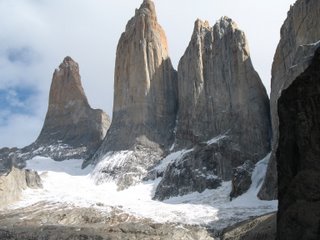Madrid
My time in the capital turned out to be a weekend feast of fine art, plazas and parks on this final weekend of the rugby world cup. It was a difficult navigational exercise driving into central Madrid and by the time I had found my way to Atocha station, where the hire car needed to be dropped off, the game had begun. I found an Irish bar showing the rugby and settled down for the second half of the France v Argentina third place play off match. Argentina turned on the style and were again too strong for France, who walked off the pitch looking decidedly disappointed with fourth place in a tournament they had hosted. The following morning, I decided to start with the wealth of modern art on offer at the Reina Sofia. It does free entry on Saturdays, so it seemed the natural choice.

Picasso's Guernica is the galleries most famous painting, a huge 3.5m x 7.8m piece which dominates one room. Much has been written about this thought provoking piece on the horror of modern warfare. It depicts the Nazi bombing of Guernica during the Spanish civil war in 1937. It certainly draws the attention more than the smaller, more colourful pieces on display nearby. The sense of dislocation which is often Picasso's cubist trademark is fully realised here. The Reina Sofia concentrates mainly on Spanish art from the last century or so and as you would expect, Dali, Picasso, Miró and Gris all get plenty of space, alongside others who were influenced by the movements they inspired. Its one of the worlds modern art treasures, with colour and ambition permeating every corner of the building. Definitely somewhere to lose yourself for a afternoon of contemplation.

I took a leisurely evening meal, very early by Spanish standards and then returned to a bar, I had earlier earmarked near the Plaza Mayor as a good candidate for watching the World Cup final. Despite arriving some 30 minutes or so before the game was due to start, the place was packed to the rafters and there was an animated debate taking place outside on the street, in both Spanish and English, as to where the game could be seen. I fell in with an English trio, who seemed to know where they were going but when their venue turned out to be closed, I led them back to the Irish bar of the previous evening as it seemed certain it would be showing the final. As luck would have it, the bar wasn't too busy and some pleasant conversation was had, while the powerhouse packs of England and South Africa ground out an edgy but un-captivating performance. The Springbok's always had the upper hand and although England put up a much better show than they had against South Africa in the group stages, the outcome never seemed in doubt.

Sunday offered up what would be to most a tough choice between the Prado and the Thyssen-Bornemisza galleries. However, as I'm not really a huge fan of old masters, religious or renaissance art, the Thyssen got the nod. It did not disappoint, the galleries host one of the worlds finest private collections, principally spanning the major art movements of the last few centuries - impressionism, expressionism, cubism and pop art all get a look in. Most of the major art figures of the these movements all have a painting or three on display, its a richly rewarding experience.

In between visiting the galleries, there were the cities monuments and plazas to explore, the rather gaudy, over the top, royal palace and the beautiful Buen Retiro park. People seemed to be making the most of the fine autumn weather and there were still three more Spanish cities to look forward to as I made my way south and into Andalusia.












